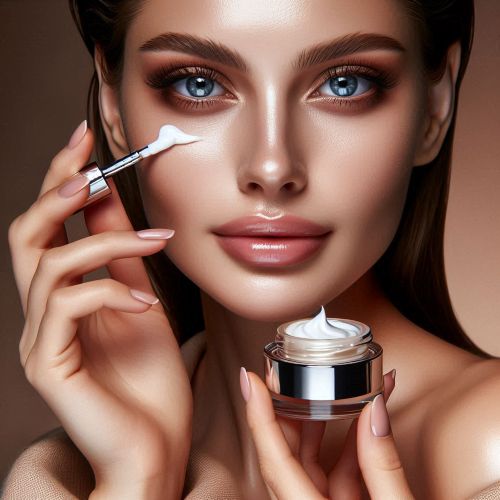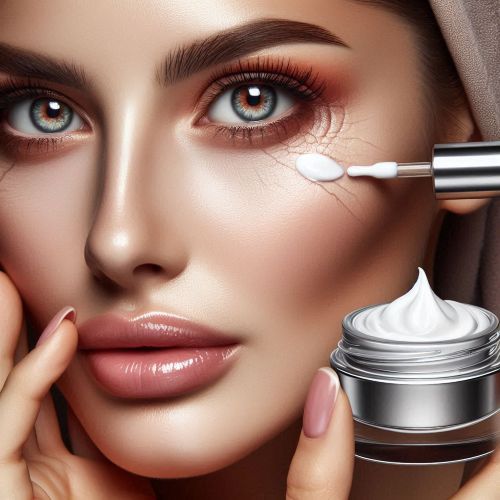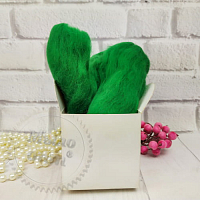-
 DIY: Video master classes
DIY: Video master classes
-
 Aromatherapy
Aromatherapy
-
 Felting master classes
Felting master classes
-
 Eating at home
Eating at home
-
 DIY cosmetics for children
DIY cosmetics for children
-
 Cooking recipes
Cooking recipes
-
 Detergents, cleaning products with your own hands
Detergents, cleaning products with your own hands
-
 Soap making as a business
Soap making as a business
-
 Natural cosmetics. Raw materials for cosmetics and soap.
Natural cosmetics. Raw materials for cosmetics and soap.
-
 Natural oils in cosmetics
Natural oils in cosmetics
-
 News
News
-
 Recipes for balms and conditioners
Recipes for balms and conditioners
-
 Bath Bomb Recipes
Bath Bomb Recipes
-
 Cream recipes. Cream making.
Cream recipes. Cream making.
-
 Lotion recipes. Gel recipes.
Lotion recipes. Gel recipes.
-
 Mask recipes
Mask recipes
-
 Soap recipes. Base soap. Soap from scratch.
Soap recipes. Base soap. Soap from scratch.
-
 Recipes for all occasions
Recipes for all occasions
-
 Natural shampoo recipes
Natural shampoo recipes
-
 Healthy Nutrition Recipes
Healthy Nutrition Recipes
-
 Scrub recipes. Massage tiles. Ubtan
Scrub recipes. Massage tiles. Ubtan
-
 DIY candles
DIY candles
-
 Reference materials, questions, tips
Reference materials, questions, tips
-
 Startup - soap production
Startup - soap production
-
 Hair care. Tips, recipes
Hair care. Tips, recipes
-
 Facial skin care. Cleansers.
Facial skin care. Cleansers.
-
 Body care. Tips, recipes
Body care. Tips, recipes
-
 Photo Reviews
Photo Reviews
-
 Chocolate Handmade
Chocolate Handmade
Eye Cream for Wrinkles: Powerful Anti-Aging Care with Peptides and Actives
 The delicate skin around the eyes is often the first to show signs of aging, with wrinkles, fine lines, and puffiness becoming prominent concerns. While industrial eye creams offer solutions, crafting your own allows for a personalized approach, ensuring potent ingredients and tailored benefits. This article delves into the intricacies of creating an effective anti-aging eye cream, highlighting its advantages, providing three detailed recipes, and offering essential tips for optimal results.
The delicate skin around the eyes is often the first to show signs of aging, with wrinkles, fine lines, and puffiness becoming prominent concerns. While industrial eye creams offer solutions, crafting your own allows for a personalized approach, ensuring potent ingredients and tailored benefits. This article delves into the intricacies of creating an effective anti-aging eye cream, highlighting its advantages, providing three detailed recipes, and offering essential tips for optimal results.
Why Choose a Homemade Anti-Wrinkle Eye Cream?
Commercial eye creams often contain fillers, synthetic fragrances, and preservatives that may irritate sensitive skin or dilute the efficacy of active ingredients. By crafting your own, you gain:
- Ingredient Control: You know exactly what goes into your eye cream, avoiding potential irritants and ensuring potent actives.
- Personalized Formulation: You can adjust ingredient ratios and select specific peptides and actives to target your unique eye area concerns.
- Freshness and Potency: Homemade eye creams are typically fresher than store-bought products, maximizing the benefits of active ingredients.
- Cost-Effectiveness: Over time, creating your own eye cream can be more economical than purchasing high-end commercial alternatives.
- Reduced Environmental Impact: Using fewer commercial products can decrease plastic waste.
Understanding the Key Ingredients:
- Peptides: These short chains of amino acids stimulate collagen and elastin production, reducing wrinkles and improving skin firmness. Key peptides for eye creams include:
- Argireline: Reduces the appearance of fine lines and wrinkles by inhibiting muscle contractions.
- Matrixyl 3000: Stimulates collagen production and repairs damaged skin.
- Haloxyl: Reduces dark circles and puffiness by strengthening capillaries.
- Hyaluronic Acid: A humectant that attracts and retains moisture, plumping the skin and reducing dryness.
- Caffeine: Reduces puffiness and dark circles by constricting blood vessels.
- Vitamin C (Ascorbyl Glucoside): A potent antioxidant that brightens the skin and stimulates collagen production.
- Retinol (Vitamin A) (Optional): A powerful anti-aging ingredient that reduces wrinkles and improves skin texture. (Use with caution due to potential irritation, and only at night.)
- Carrier Oils: Provide essential fatty acids and hydration. Examples include jojoba oil, rosehip oil, and argan oil.
- Emulsifiers: Bind oil and water together, creating a smooth and stable cream. Examples include emulsifying wax and olivem 1000.
- Preservatives: Prevent bacterial and fungal growth, extending the shelf life of your eye cream. Examples include phenoxyethanol and Geogard ECT.
Recipe 1: Basic Peptide and Hyaluronic Acid Eye Cream
Ingredients:
- 30ml Distilled Water
- 10ml Jojoba Oil
- 5g Emulsifying Wax
- 3ml Hyaluronic Acid Solution (1%)
- 2ml Argireline Solution (10%)
- 1ml Preservative (Phenoxyethanol)
Instructions:
- Prepare the Water Phase: Heat the distilled water in a double boiler or heat-safe container until it reaches approximately 70°C (158°F).
- Prepare the Oil Phase: In a separate container, combine the jojoba oil and emulsifying wax. Heat until the wax melts completely, also around 70°C (158°F).
- Combine the Phases: Slowly pour the water phase into the oil phase, continuously stirring with a stick blender or immersion blender.
- Emulsify: Blend the mixture for several minutes until a smooth and creamy emulsion forms.
- Cool Down: Remove the mixture from heat and allow it to cool to approximately 40°C (104°F).
- Add Actives: Once cooled, add the hyaluronic acid solution and Argireline solution. Stir thoroughly.
- Add Preservative: Add the preservative and stir well.
- Package: Transfer the eye cream to a clean, airtight container.
Recipe 2: Advanced Anti-Aging Eye Cream with Caffeine and Vitamin C
Ingredients:
- 25ml Distilled Water
- 10ml Rosehip Oil
- 5g Olivem 1000
- 3ml Matrixyl 3000 Solution (2%)
- 2ml Caffeine Solution (5%)
- 2ml Ascorbyl Glucoside (Vitamin C) (5%)
- 1ml Geogard ECT
Instructions:
- Prepare Oil Phase: melt the Rosehip oil and Olivem 1000 using a double boiler.
- Heat Water Phase: Heat the distilled water to 70C.
- Combine Phases: Pour the water phase into the oil phase, blend with a stick blender until emulsified.
- Cool Down: Cool to 40C.
- Add Actives: Add Matrixyl 3000, Caffeine, and Ascorbyl Glucoside, blend well.
- Add Preservative: Add Geogard ECT, mix thoroughly.
- Package: Transfer to a clean airless pump or small jar.
Recipe 3: Rich Eye Balm with Peptides and Argan Oil
Ingredients:
- 15g Shea Butter
- 10ml Argan Oil
- 5g Beeswax
- 3ml Haloxyl Solution (2%)
- 2ml Hyaluronic Acid Solution (1%)
- 1ml Phenoxyethanol
Instructions:
- Melt Ingredients: Melt the shea butter, argan oil, and beeswax in a double boiler until fully melted.
- Cool Slightly: Remove from heat and let cool slightly.
- Add Actives: Add the Haloxyl solution and hyaluronic acid solution, stirring gently.
- Add Preservative: Add the phenoxyethanol and mix thoroughly.
- Pour and Set: Pour the mixture into small containers and let it set completely.
 Recommendations for Use:
Recommendations for Use:
- Apply a small amount of eye cream to the delicate skin around the eyes, using your ring finger to gently pat it in.
- Avoid pulling or stretching the skin.
- Use morning and night for optimal results.
- Perform a patch test before applying any new eye cream.
Storage:
- Store your homemade eye cream in a cool, dark place away from direct sunlight.
- Use dark glass or airtight containers to protect the cream from oxidation.
- Refrigeration can extend the shelf life of your eye cream.
- Generally, a homemade eye cream with a preservative will last 3-6 months.
Advantages Over Industrial Analogues:
- Customization: Tailor the eye cream to your specific needs and concerns.
- Fresh Ingredients: Homemade eye creams are made with fresh, potent ingredients.
- Reduced Chemical Exposure: Avoid harsh chemicals and synthetic additives.
- Targeted Active Selection: Choose actives that directly address your eye area concerns.
- Cost-Effective: Save money by making your own high-quality eye cream.
By crafting your own anti-wrinkle eye cream, you can create a powerful and personalized solution to combat the signs of aging and reveal a brighter, more youthful eye area.
Mylo Opt Cosmetics Blog – Your Reliable Guide to Beauty and Care
Welcome to the Mylo Opt cosmetics blog! Here, you will find valuable advice, interesting recipes, and professional recommendations for creating soap, cosmetics, and candles with your own hands. Our blog is designed for anyone passionate about natural cosmetics, looking for new ideas, and wanting to learn more about producing high-quality skincare and haircare products. We share tested recipes, useful tips, and the latest news from the world of cosmetics.
Why Choose the Mylo Opt Cosmetics Blog?
Mylo Opt is not just an online store; it is a community of people passionate about creating natural cosmetics. Here are a few reasons why our blog will be useful to you:
- Experience and Expertise: Our authors are experienced cosmetologists, soap makers, and aromatherapy specialists. We share reliable and tested recipes that have undergone thorough testing and received positive feedback.
- Credibility and Authority: We ensure that all information in our blog is up-to-date and reliable. We reference scientific research and verified sources so that you can trust the quality of the information provided.
- Reader-Focused: Our content is tailored to you – our readers. We strive to answer your questions, solve your problems, and inspire new achievements in the world of natural cosmetics.
Popular Products from the Mylo Opt Online Store
Before we move on to recipes and tips, let us introduce you to the most popular products from our online store, which will help you create high-quality and natural cosmetics:
- Soap Bases: High-quality soap bases allow you to create beautiful and beneficial handmade soaps. We offer glycerin bases, bases with added oils and extracts, as well as transparent and white bases.
- Fragrance Oils and Fragrances: Give your products a unique scent with our fragrance oils and fragrances. We offer a wide range of scents – from fresh and floral to spicy and woody.
- Essential Oils: Essential oils are natural components that not only add fragrance to products but also offer beneficial properties for the skin and hair. Our range includes lavender, mint, eucalyptus, lemon, and many other oils.
- Active Ingredients: Vitamins, antioxidants, hyaluronic acid, and other active ingredients help improve the properties of your cosmetics. We offer only tested and high-quality components.
- Pigments and Dyes: Give your products bright and lasting colors with our pigments and dyes. They are safe for the skin and suitable for use in soap, cosmetics, and candles.
- Emulsifiers and Thickeners: To create creams and lotions, you will need emulsifiers and thickeners. We offer quality ingredients that help you achieve the desired consistency and stability of the product.
- Soap and Candle Molds: Create unique items with our soap and candle molds. Our range includes molds of various sizes and designs.
- Everything for Candles: Wax, wicks, fragrances, and dyes for candles – we have everything you need to create beautiful and fragrant candles.
Recipes and Tips for Making Handmade Soap
Cold Process Soap for Beginners
Making cold process soap is an exciting process that allows you to control all the ingredients and create unique recipes. Here is one simple cold process soap recipe for beginners:
Ingredients:
- 500 g olive oil
- 300 g coconut oil
- 200 g palm oil
- 150 g castor oil
- 120 g lye (sodium hydroxide)
- 300 ml distilled water
- Essential oils (lavender, mint, eucalyptus)
- Pigments or natural dyes (optional)
Process:
- Prepare all ingredients and tools. Always use protective gloves and goggles, as lye can be dangerous.
- Weigh the lye and water. Slowly add the lye to the water, stirring until it fully dissolves. Allow the mixture to cool to 40-45°C.
- Weigh the oils and melt them in a water bath. When the oils and lye solution reach the same temperature (about 40-45°C), slowly pour the lye into the oils, stirring constantly.
- Use an immersion blender to mix until trace (when the mixture thickens and leaves a trail when stirred).
- Add essential oils and pigments if desired. Mix thoroughly.
- Pour the mixture into a prepared mold and cover with a towel. Let the soap harden for 24-48 hours.
- Remove the soap from the mold and cut it into bars. Allow the soap to cure for 4-6 weeks before use.
Homemade Cosmetics Recipes
DIY Moisturizing Cream
Creating a moisturizing cream at home allows you to control the ingredients and adapt the recipe to your needs. Here is a simple recipe for a moisturizing cream:
Ingredients:
- 50 ml rose water
- 50 ml distilled water
- 10 g emulsifier (e.g., Olivem 1000)
- 10 ml jojoba oil
- 5 ml avocado oil
- 5 drops lavender essential oil
- 2 drops tea tree essential oil
Process:
- Weigh all the ingredients.
- In a water bath, melt the emulsifier with the oils until smooth.
- Separately, heat the water phase (rose water and distilled water) to the same temperature as the oil phase.
- Slowly pour the water phase into the oil phase, stirring constantly.
- Use an immersion blender to emulsify until you achieve a creamy consistency.
- Add essential oils and mix thoroughly.
- Pour the cream into a sterilized jar and allow it to cool.
DIY Candle Recipes
Aromatic Soy Candle
Creating aromatic candles is a creative process that allows you to experiment with scents and designs. Here is a simple recipe for a soy candle:
Ingredients:
- 200 g soy wax
- 20 ml fragrance oil (e.g., vanilla or lavender)
- Wick for candles
- Dyes (optional)
- Glass or metal candle mold
Process:
- Melt the soy wax in a water bath until liquid.
- Add the fragrance oil and dyes if desired. Mix thoroughly.
- Secure the wick in the center of the candle mold.
- Slowly pour the melted wax into the mold, holding the wick.
- Allow the candle to fully harden (about 24 hours).
- Trim the wick to the desired length and enjoy your aromatic candle.
Tips for Beginners in Cream Making
- Learn the Basics: Before starting to create creams, it is important to learn the basic principles and ingredients used in cream making.
- Experiment with Formulas: Do not be afraid to experiment with different ingredients and proportions to find the perfect formula for your skin.
- Use Quality Ingredients: The effectiveness and safety of your product depend on the quality of the ingredients. Always choose tested and natural components.
- Maintain Hygiene: It is important to maintain cleanliness and sterility when creating cosmetics to avoid contamination and spoilage of the product.
- Start with Simple Recipes: For beginners, it is best to start with simple recipes to master the basic techniques and principles of cream making.
Conclusion
Our Mylo Opt cosmetics blog is your reliable source of information and inspiration in the world of natural cosmetics. We share useful tips, tested recipes, and the latest news to help you create quality and effective products for skin, hair, and home care. Subscribe to our blog, follow the updates, and discover new opportunities in the world of natural cosmetics with Mylo Opt!






